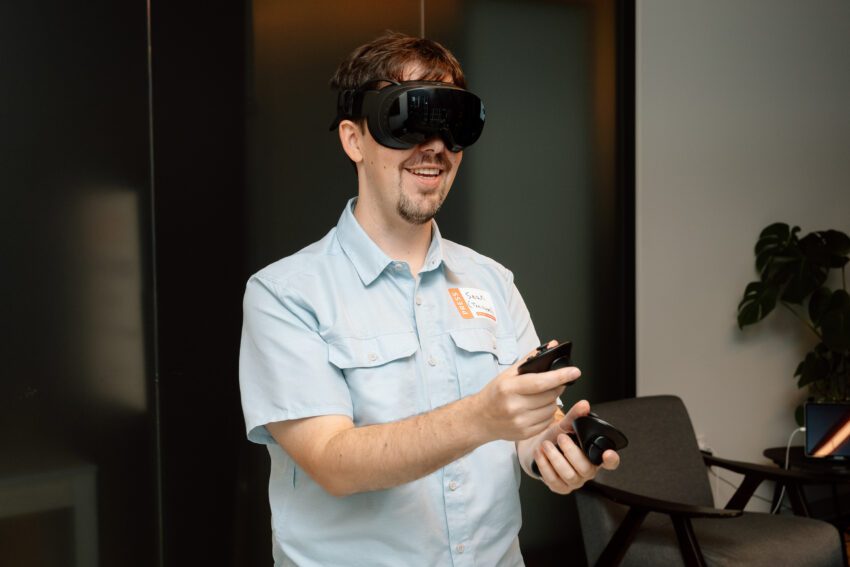
valve s new vr streaming trick won Valve’s latest innovation in virtual reality, the Steam Frame, introduces a groundbreaking streaming technology that enhances the gaming experience across various headsets.
valve s new vr streaming trick won
Understanding Foveated Streaming
At the core of Valve’s Steam Frame is a technique known as foveated streaming. This method optimizes the way visual data is transmitted from a gaming PC to the VR headset, significantly reducing latency and improving overall performance. Foveated streaming works by prioritizing high-quality images for the area of the screen where the user is directly looking, while simultaneously lowering the resolution of peripheral vision areas. This approach not only conserves bandwidth but also minimizes the processing demands on both the headset and the gaming PC.
The Technology Behind It
The Steam Frame employs two key hardware components to facilitate foveated streaming. The first is a dedicated wireless streaming adapter that transmits games from a PC to the headset. This adapter operates on a 6GHz frequency, which is crucial for maintaining a stable and high-quality connection. The second component is a pair of eye-tracking cameras integrated into the headset. These cameras continuously monitor the user’s gaze, allowing the system to dynamically adjust the image quality based on where the user is looking.
Foveated streaming is akin to foveated rendering, a technique used in other high-end VR headsets, such as Apple’s Vision Pro. While foveated rendering processes images directly on the headset, foveated streaming shifts this responsibility to the PC, making it a more versatile solution for streaming applications.
Compatibility and Future Prospects
One of the most noteworthy aspects of Valve’s foveated streaming technology is its compatibility. While the feature is currently optimized for the Steam Frame, Valve has confirmed that it can also work with “any headset that supports eye tracking” and is “compatible with our Steam Link streaming app,” as stated by hardware engineer Jeremy Selan. This opens up a world of possibilities for VR enthusiasts who own various headsets, allowing them to benefit from this advanced streaming technology.
Potential Applications
The implications of foveated streaming extend beyond just improved graphics. By reducing the amount of data that needs to be transmitted, the technology can lead to lower latency, which is crucial for an immersive gaming experience. In fast-paced games where split-second decisions can determine the outcome, any reduction in latency can significantly enhance gameplay. Furthermore, the reduced bandwidth requirements mean that users with slower internet connections can still enjoy high-quality VR experiences without the need for extensive hardware upgrades.
Valve’s Vision for the Future
Valve’s commitment to making foveated streaming accessible to a broader audience is evident. However, the company has not yet disclosed when this feature will be available for other headsets or which specific models will be compatible. The anticipation surrounding these developments reflects the growing interest in VR technology and its potential to revolutionize gaming.
Real-World Experience with Foveated Streaming
Early demonstrations of foveated streaming have garnered positive feedback from users. One notable experience involved playing the critically acclaimed game Half-Life: Alyx on the Steam Frame, streamed from a nearby PC using the dedicated wireless adapter. Users reported that the experience felt seamless, with no noticeable lag or degradation in image quality. This level of performance is particularly impressive given the complexities involved in streaming high-fidelity VR content.
Valve’s ability to deliver such a high-quality experience raises questions about the future of VR gaming. As more developers adopt similar streaming technologies, we may see a shift in how VR games are designed and played. The potential for cross-compatibility with various headsets could lead to a more unified VR ecosystem, benefiting both developers and consumers.
Challenges and Limitations
Despite the promising advancements, there are challenges that Valve faces in expanding the reach of foveated streaming. One significant limitation is the wireless adapter’s compatibility with other VR headsets. According to Selan, supporting the wireless adapter for non-Valve headsets is complicated due to the lack of lower-level operating system support, which is readily available with SteamOS. This limitation may hinder the widespread adoption of the technology across different platforms.
Market Reactions and Industry Implications
The introduction of foveated streaming has sparked interest not only among consumers but also within the gaming industry. Developers are keen to explore how this technology can enhance their games and provide players with more immersive experiences. The ability to stream high-quality VR content with reduced latency could lead to new genres of games that were previously unfeasible due to hardware limitations.
Moreover, the competitive landscape of VR gaming is likely to shift as other companies respond to Valve’s innovations. As more players enter the market with their own streaming solutions, the race to deliver the best VR experience will intensify. This competition could drive further advancements in technology, ultimately benefiting consumers with better products and experiences.
Conclusion
Valve’s Steam Frame and its foveated streaming technology represent a significant leap forward in the realm of virtual reality. By prioritizing high-quality visuals where they matter most and reducing the demands on bandwidth and processing power, Valve is setting a new standard for VR gaming. While the technology is currently optimized for the Steam Frame, its potential compatibility with other headsets opens up exciting possibilities for the future of VR.
As the gaming industry continues to evolve, the implications of foveated streaming could reshape how developers approach VR game design and how players engage with virtual worlds. While challenges remain, particularly regarding compatibility with other headsets, the excitement surrounding this technology is palpable. Valve’s innovations may very well pave the way for a more connected and immersive VR ecosystem.
Source: Original report
Was this helpful?
Last Modified: November 13, 2025 at 6:36 am
2 views















